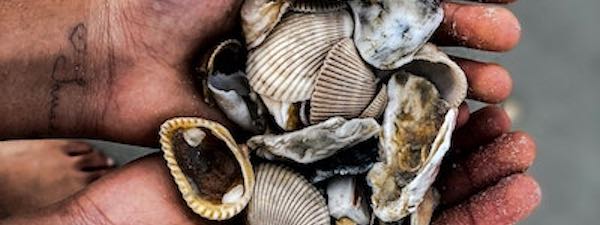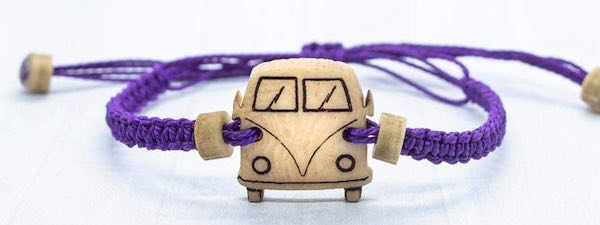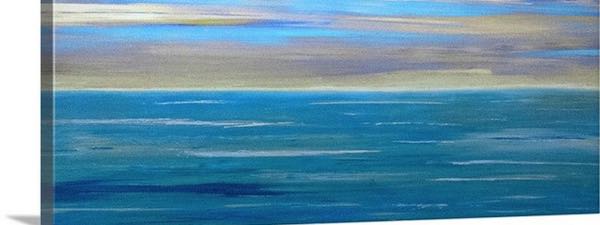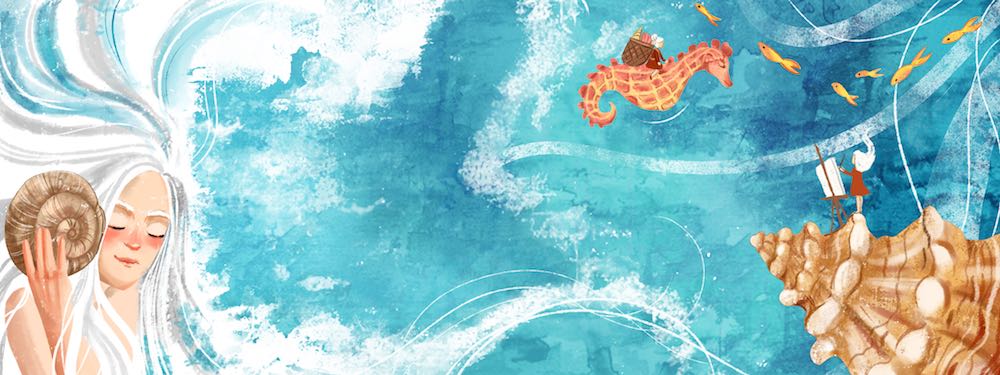What is sea glass, where do you find sea glass & what can you make with it?
On this page we at Seashell Madness look to answer all of your questions about sea glass! Read on...
- What is Sea Glass
- Where to Find Sea Glass
- Sea Glass Festivals
- Spotting Fake Sea Glass
- Sea Glass Arts & Crafts

What is Sea Glass?
It almost has the feel of a fairy tale: In our carelessness we dump our trash out into the sea, but then, through some act of seeming magic and benevolence, the sea patiently takes that trash and turns it into something beautiful which it then one day returns to us with the tide.
Trash which has made this remarkable journey we call sea glass.
In the days before plastic containers, pretty much all liquids and many perishable items were shipped and stored in glass containers.
For centuries glass containers were in very wide use.
From wine to perfume to peanut butter, generations lived with glass containers until relatively recently (in 1978 the Coca Cola company started selling soda in plastic bottles — I remember the commercials — and from there everything changed).
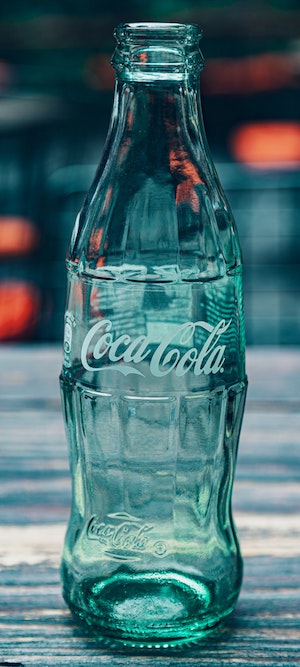
Hmm… A lot of
sea glass is green…
~ Photo by Dimitri Houtteman
But what happened to that glass container when it was no longer needed? When the liquid had been used up, the jelly or pickled herring eaten? Or — as often happens with glass containers — when it got broken?
Well, the same thing that often happens to used containers now also happened to those glass containers then. They were thrown away.
Also until relatively recently, many coastal communities, and pretty much all sailing ships, would use the sea as their community trash dump.
Organic materials like food scraps, paper and leather would break down.
Metal containers would rust away to practically nothing.
But glass, being much more impervious to the elements, would stick around for a while.
And as it stuck around it was churned by the tides and currents, scraped along rocks, rubbed through the sandy sea bottom. So over the years and decades what was once sharp, broken shards of glass were turned smooth.
Sea glass is born.
And at some point, that sea glass washes ashore, where we look at it and think “that’s really pretty!”
If only all our tales of trash could end like this. Plastic bottles don’t become butterflies and hazardous chemicals don’t turn to honey, but glass dumped into the sea as trash does return to us as art. And that is beautiful.
Check out my article on Sea Glass Jewelry
Where do You Find Sea Glass?
Where to find sea glass? Well, actually, sea glass washes up on beaches all around the world. Some places you find more of it than in others.
For instance, our local beach daily churns up large numbers of really great seashells but doesn’t bring us a lot of sea glass.
Oh, if you know where — and more importantly, when — to look you can find some. Yet despite the fact that our beach has very little sea glass, only a little ways up the coast is a beach that is world-famous for its sea glass.
I guess that’s just the way it goes.
But why is that the way it goes?
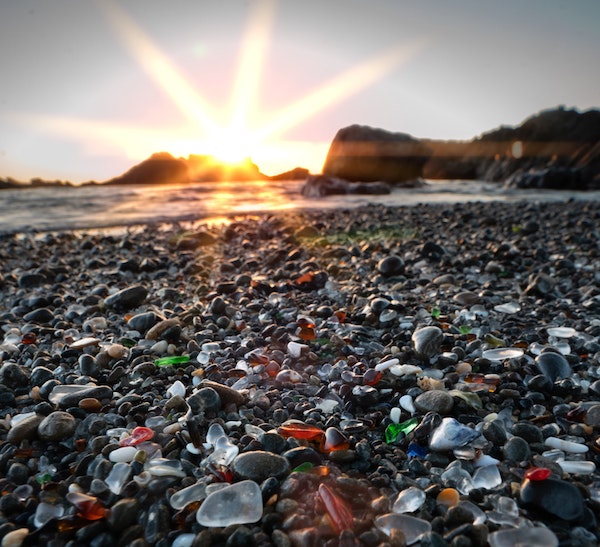
Glass Beach, Fort Bragg, California ~ Photo by Joshua Sortino on Unsplash
Well, if you think about it, now that you know the answer to the question “what is sea glass?”, then where would you expect to find the most sea glass?
Obviously, you would think that your best bet at finding sea glass today would be at beaches near spots where lots of trash was dumped in the past.
Turns out this is true.
For instance, once upon a time on the Hawaiian island of Kauai there was a sugar plantation, an oil refinery and lots of general industrial sites. Between the sugar plantation and the oil refinery was a spot where lots of trash went into the sea.
It’s funny when we think that there was a time when such a beautiful spot was nothing more than a trash dump. But luckily, as we’ve seen, an area like this can be a boon for sea glass today.
My oldest daughter lives on the island of Kauai and on one visit a few years back she took me to several amazing beaches, including the one next to the former sugar plantation. It is located at Hanapepe Bay and has become known as Glass Beach.
Just as an aside, there is also a very old cemetery on the bluffs above this beach. Many of the early sugar plantation workers — most of Japanese descent — are buried here. With tombstones from the 1800s featuring Buddhist motifs and Kanji inscriptions, this ocean-view cemetery is definitely worth seeing.
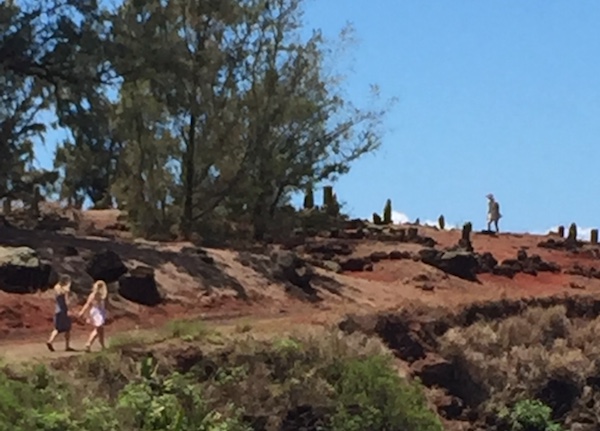
My daughters and my sister hiked up to this cool cemetery.
But I’m getting off-track. We’re talking about sea glass, aren’t we?
Well, it so happens that the beach at Hanapepe Bay is chocked full of it — beautiful, multicolored pebbles have covered the sand for decades now.
For someone like me who is used to seeing sea glass in the wild so rarely, it was a real treat to walk on a beach which had so much of it.
Now you should know that there are several signs on the beach asking that you leave the sea glass there on the beach for others to enjoy. So, despite how tempting it was to take just one or two, I resisted the temptation and respected the signs.
I don’t think that it’s technically illegal to take glass from that beach, but I definitely want future visitors to be able to see that amazing beach as I had seen it. So I resisted.
On our way out, we looked down the beach and saw two ladies shoveling handfuls of glass into bags.
Sigh.
Up the California coast from us is another beach which is also referred to as Glass Beach.
This one is MacKerricher State Park in Fort Bragg, California. This beach was a dump site for nearly 60 years. You can only imagine the amount of trash and junk which made its way into the ocean from this spot. And as you would expect, this area is one great site for sea glass.
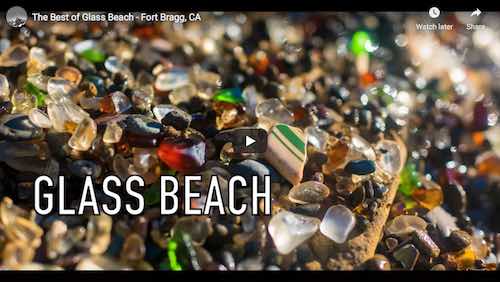
Awesome shots of Glass Beach at Fort Bragg in California. Youtube
Because the beach is part of a State Park, there are rules explicitly prohibiting visitors from removing the sea glass from the beach. As a result, this particular glass beach still has some glass left in it. And decent-sized pieces to boot. It is a sight to see.
But, again, you can’t take any with you.
I’m sure you’re starting to see a pattern here. Beaches which have become famous for being loaded with sea glass have attracted so much attention that much of the sea glass is gone. Meanwhile for the glass that remains, the locals and officials ask that you leave it there for others to enjoy.
So, if you want to leave it for others to enjoy — or if you just want to avoid feeling guilty about taking it, or if you think to yourself hey, there’s no challenge to finding sea glass if the whole darned beach is full of it! — then what do you do?
As I mentioned at the beginning in the discussion of “what is sea glass?”, pretty much every beach in the world has some sea glass washing up on its shores. There’s just more of a challenge to some beaches than to others. And doesn’t a little bit of challenge make it more fun?
Let’s go back to my local beach. Remember how I said that there wasn’t a lot of sea glass coming ashore at our beach? Remember how I also said that you can find some if you know where and when to look?
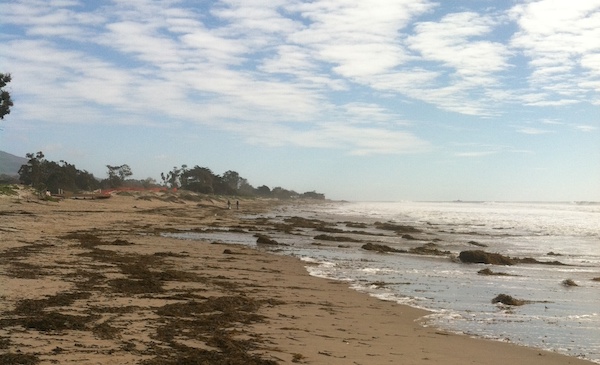
Our local beach – lots of shells, little glass
It turns out that the “when” of sea glass hunting is actually more important than the “where.” And for our local beach, it was my younger daughter who found out both, almost by accident.
It turns out that your best shot at sea glass on our beach is a small inlet where the local creek meets the ocean. And it turns out that the best time is right after the tide goes down right after a heavy storm.
On that particular day my daughter and her boyfriend came back with several wonderful pieces of colored sea glass. In the years since that day, I’ve had the opportunity to talk with other beachcombers from both near and far, who confirm that the best time to go hunting for sea glass is after a storm.
So if you find yourself near a beach on a particularly rainy day, start dreaming of sea glass. It will likely come to you when the sunshine does!
Check out my article on Sea Glass Artwork
Sea Glass Stoppers
In your journey into the wonderful world of sea glass, you will likely at some point come across the term “sea glass stoppers.”
You may well wonder, what in the world is a “sea glass stopper?”
Well, glass bottles need to be sealed with something. For all of those years before the invention of the screw-top cap there were essentially 2 ways to seal a bottle:
- Corks
- Glass Stoppers
The least expensive of the two is the one that we are all pretty familiar with as it is still somewhat in use today: the cork (by the way, I love collecting wine corks and I love art that is made from old wine corks). Until very recently, cork was a cheap and readily available material. And the way that it could be easily compressed into a bottle’s neck made for a perfect seal. The cork acts as a stopper.
But if you wanted something fancier — say for your expensive perfume bottle — you would accomplish this task with a glass stopper. A glass stopper was tapered to slide into the neck of the bottle. If a water-tight seal was needed, this tapered part of the stopper would be lined with cork or something similar. If a firm seal was not strictly needed, then the stopper would simply be the glass.
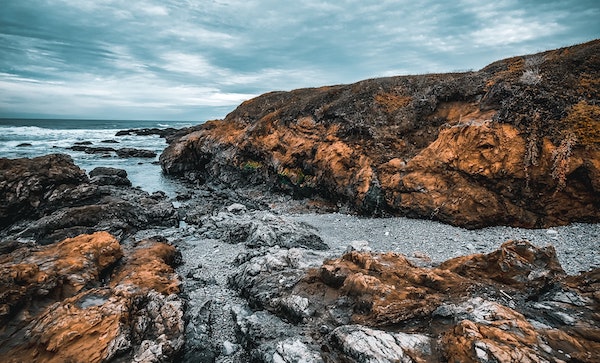
Glass Beach, Fort Bragg, California ~ Photo by Zahid Lilani on Unsplash
And as you’ve guessed by now, many of these stoppers ended up in the trash and from there, into the sea. However, there is one thing that makes a stopper a bit different from most sea glass: because they were generally solid — rather than hollow like bottles — they were much more durable. Glass stoppers often come through their years of tumbling in the ocean in one piece and looking recognizably close to the shape they were when they went into the ocean. Which makes them especially prized for glass collectors.
So if in your own beach combing you come across something that looks like a small glass doorknob, stop and pick that sucker up! It may well be a stopper!
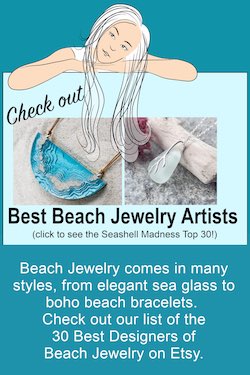
Seaglass Associations and Festivals
If you find yourself getting serious about sea glass, there are many groups just for you! The biggest is probably The North American Sea Glass Association, whose website is a great place to start if you are ready to get together with other officianados of sea glass.
Most of these groups also organize festivals which are a real feast for the eyes. Where we live, the closest is the Santa Barbara Seaglass and Ocean Arts Festival which is held each September. I always make it a point to go to this one. And I spend hours and hours just gawking at all of the amazingly creative things that I see. From amazing jewelry to murals to beach art, to seashell art, for that day I am in heaven.
- Santa Barbara Seaglass and Ocean Arts Festival
- Santa Cruz Sea Glass & Ocean Art Festival
- Eastern Shore Sea Glass & Coastal Arts Festival
- North American Seaglass Association Festival
- Cayucos Sea Glass Festival
- International Beachcombing Conference
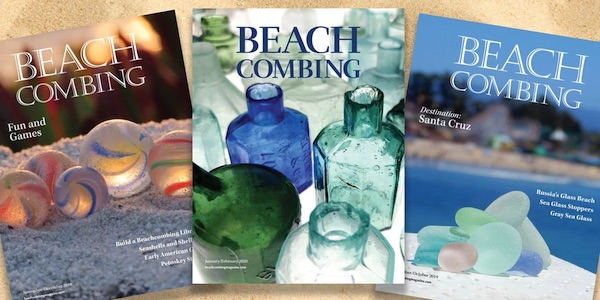
There’s even a really cool magazine devoted to this. Subscribe to it here.
Sea Glass, Beach Glass & Faux Glass
So, we know the answer to what is sea glass, but then what is “beach glass?”
Depends on who you ask, since many people use the terms sea glass and beach glass interchangeably. But most glass collectors would define beach glass to be glass which has been smoothed out by natural freshwater sources rather than saltwater sources. Certain rivers can produce beach glass, as can lakes which are large enough to generate ocean-like currents, such as the Great Lakes of North America.
And now we get into something a little more controversial: Faux Sea Glass. As the name would suggest, this is not glass which has spent years or decades churning in the ocean, but instead is some form of imitation of sea glass. Perhaps, not even glass at all.
The great interest in sea glass has inspired a lot of artists and crafters to create pieces featuring sea glass. Many are amazing. But as we’ve seen, there’s a finite amount of the real sea glass out there in the world, and it gets harder and harder to find. So there is quite a bit of imitation glass out there.
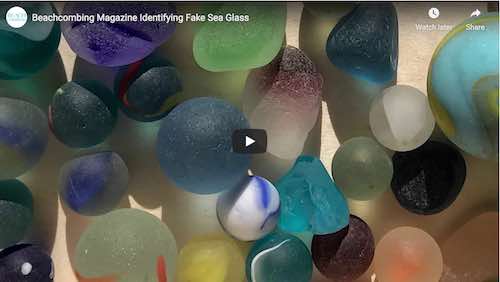
A great, short video on spotting fake sea glass from Beachcombing Magazine | Youtube
Obviously, when we realize how hard it is to get a lot of sea glass together, then it becomes pretty obvious that the giant bag labeled “SEA GLASS” at your local crafts store has likely never been anywhere near the sea. It has to be faux. But how can you tell if they don’t tell you?
Let’s start with how imitation glass is made. Most faux glass pieces are made by simply using a gem tumbler. As you can probably guess by the name, this is a machine which tosses and turns gems to smooth them out. The same can be done with pieces of glass or porcelain. Essentially, you’re taking the same process that happens in nature and speeding it up.
This is generally what is sold in crafts shops and is easily distinguishable from the real thing. Aside from labeling their bags “SEA GLASS,” these manufacturers don’t actually put a lot of effort into passing their product off as authentic. Here are a few tip-offs:
- A bag will usually contain a lot of large pieces (these days it is hard to find large pieces of the real stuff, so a bunch of large pieces in one bag — especially for cheap! — is a red flag).
- Pieces tend to all be basically the same size and shape (glass breaks in all different sizes and shapes and is worn down in weird ways after decades in the sea).
- Pieces are a rare color at a cheap price (most sea glass is white, green or brown — which makes sense when you think that most glass is clear, soda bottles were green and beer bottles are brown. Meanwhile there have never been a lot of red, yellow or orange bottles.)
- The surface tends to be smooth or have uniform, shallow indents (seawater, over time, leaves glass pock-marked with what are referred to as “C marks” which are varied in shape and depth).
- The surface tends to be clear (another effect of seawater on glass is that it leaves the surface with a “milky” look which does not wipe off)
There are others imitations, however, that are much harder to spot. These are from manufacturers who are intentionally trying to fool you so that they can charge more for their product. For instance, they pay attention to making more random shapes and they may use acid to discolor and pock-mark their glass.
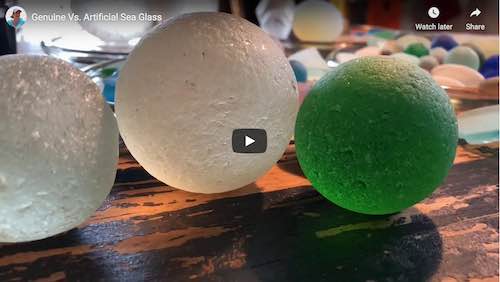
Mary T. McCarthy from The Beachcombing Center Talks Real vs. Fake (with an explanation of what sea glass is) | Youtube
Discerning artists will go out of their way to make sure that they are using real sea glass (and those artists will usually go out of their way to let you know that they’ve gone out of their way to get real glass). At the same time a lot of artists and crafters who label their work as sea glass are unaware that they even are using faux glass for their creations.
And of course a relevant question is: do you care if it’s real or faux sea glass? Many people don’t.
Me personally, while I would definitely like for an artist to do their research so that they know whether they are using real or faux sea glass and I would like for them to tell me which it is (and I always point out the designer’s claims when I review or recommend sea glass art) there are several examples of both real and faux glass that I like.
Generally speaking, I think that jewelry, especially necklaces and earrings, look much, much better when using the real thing. Jewelry should definitely be real, in my opinion.
But for artwork such as murals or statues, some pretty amazing things can be created with the fake stuff, especially larger pieces which require a lot of glass.
And that’s okay with me (as long as no one lies about it).
So it depends.
“Sea glass, beach glass
Real glass, fake glass
You pick what you’d
Like to see glass!”
What Can You Make with Sea Glass?
A better question might be “what can’t you make with sea glass?” Sea glass is a prime component of many arts and crafts projects. The wide range of things that you can create with sea glass is only limited by your imagination.
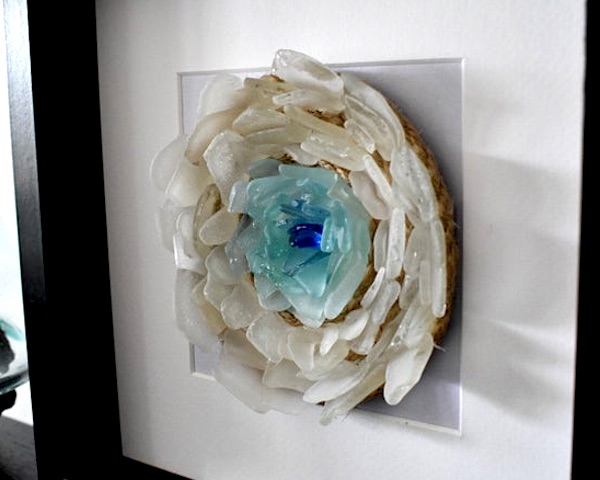
“Rare Blue Flower,” an amazing 3d sea glass creation by Sarah Goss, available on Etsy.
That said, probably the most popular use for sea glass is in the making of jewelry. A few tiny pieces of this ancient glass, a dash of silver and an artist’s imagination are all that’s necessary to create stunning, knockout pieces.
And the jewelry! Oh, the jewelry that you can make with sea glass!
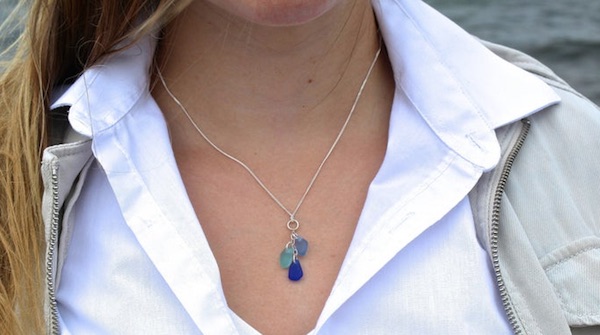
Like this amazing Cascade Sea Glass Necklace by designer Carla at Lita Sea Jewelry
Oh, to be a sea glass jewelry designer…
Check out my article on Sea Glass Jewelry
Sea Glass Books
It wasn’t so long ago when there were only a handful of books about sea glass, but these days there are quite a few on the subject (and many of them are really good!).
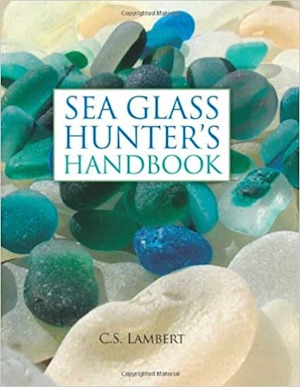
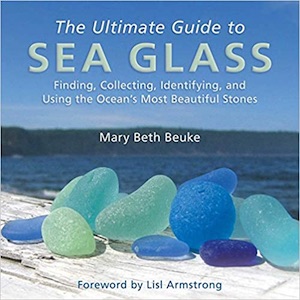
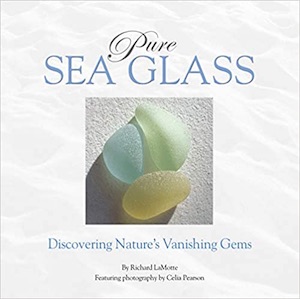
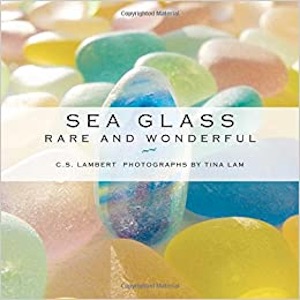
So, in Conclusion…
I hope this little page has helped a bit in getting to know about sea glass. It’s a wonderful hobby (some would call it an addiction, but that’s another story) that can bring you countless hours of enjoyment.
Whether you’re talking about the relaxing time spent on shorelines doing your beachcoming, or if you enjoy taking these treasures and turning them into art, or even if you just enjoy others doing these things, sea glass can bring a lifetime of enjoyment.
All About Sea Glass
Well there you have it. We hope that we've answered all of your questions about sea glass.
Have a look around the site for more great stuff on sea glass and other beach-related fun. And if you liked this articl, please share it on your social. Thanks!
Written by Renee


